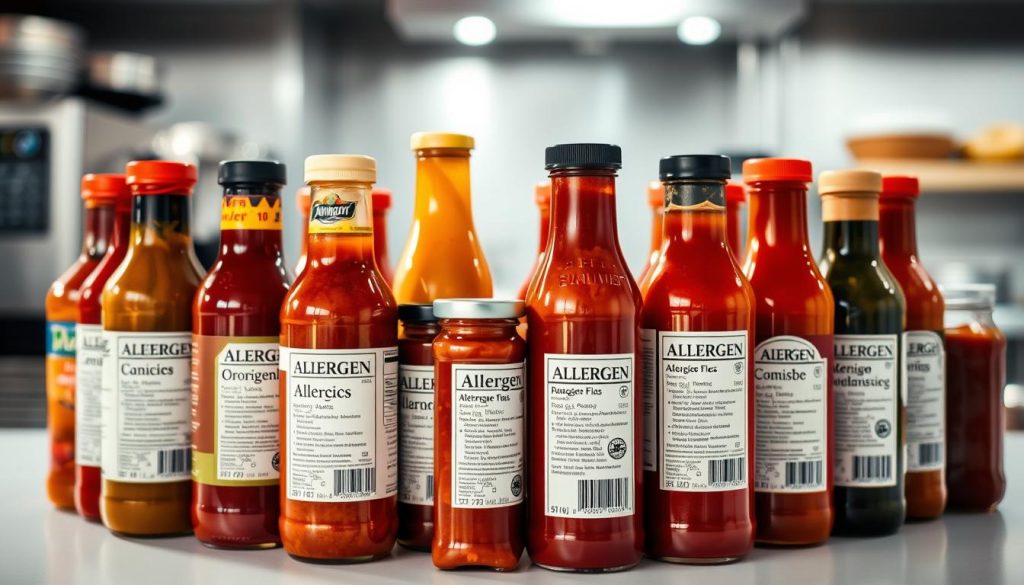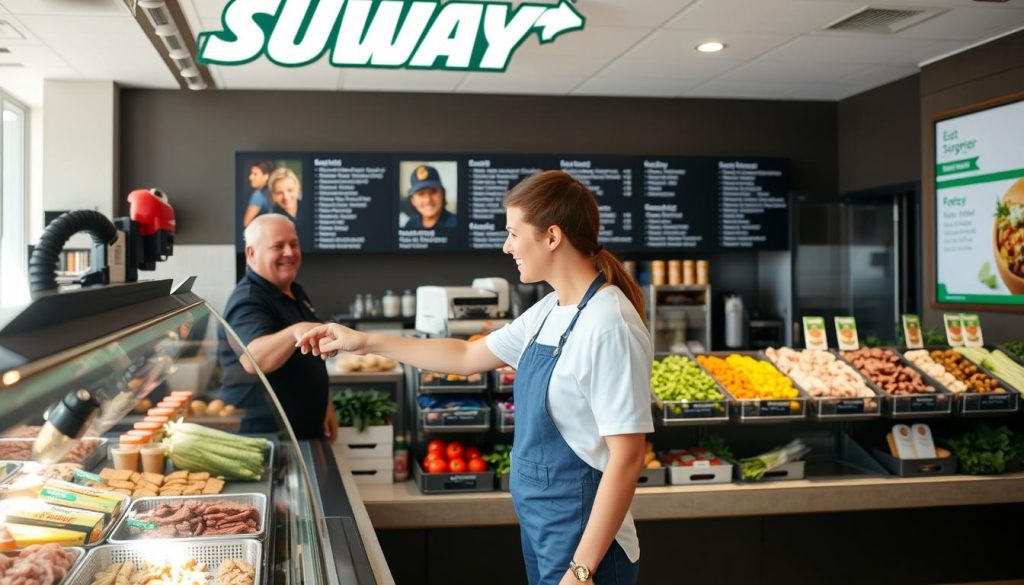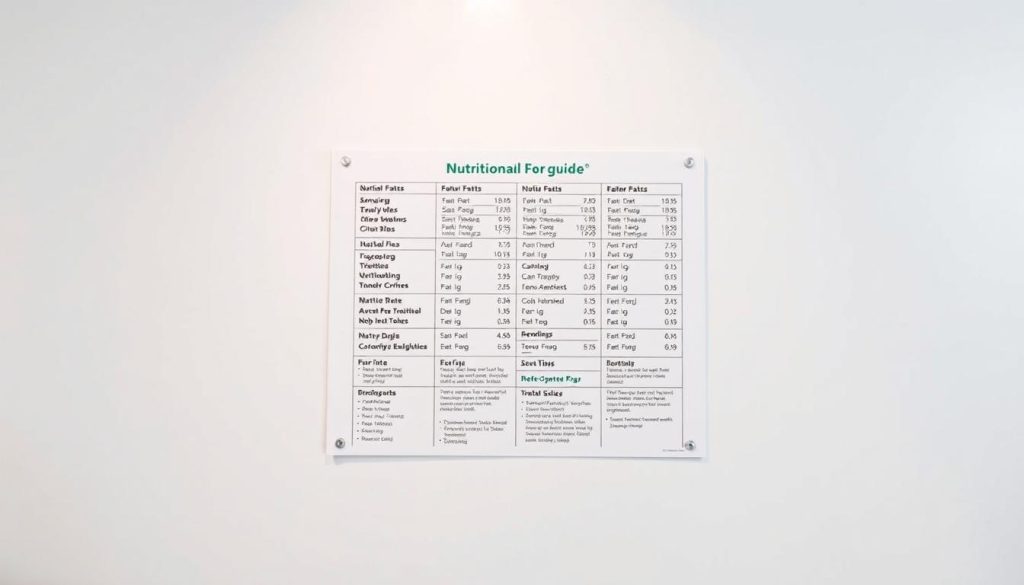Subway Allergen Menu: Safe Choices for Allergy Needs
Finding reliable dining options with dietary restrictions can feel overwhelming. Updated guidelines now offer clearer ingredient details and safety practices for U.S. locations. Recent changes prioritize transparency for those avoiding dairy, eggs, or gluten. Customizable choices let guests build meals around their needs, including plant-based cheeses and alternative breads. Cross-contamination risks remain, so communication with…
Finding reliable dining options with dietary restrictions can feel overwhelming. Updated guidelines now offer clearer ingredient details and safety practices for U.S. locations.
Recent changes prioritize transparency for those avoiding dairy, eggs, or gluten. Customizable choices let guests build meals around their needs, including plant-based cheeses and alternative breads.
Cross-contamination risks remain, so communication with staff is key. Always check ingredient lists online or in-store before ordering—recipes may vary by location.
New protocols emphasize training to reduce allergy-related incidents. This ensures every visit aligns with personal health requirements while maintaining flavor and variety.
Overview of the Subway Allergen Menu and Its Importance
Clear ingredient communication is essential for diners with food sensitivities. Over 32 million Americans manage allergies, making transparency non-negotiable in food service.
Why Allergen Transparency Matters
Guests rely on accurate details to avoid reactions. Chains now prioritize labeling items like honey mustard sauce, which may contain eggs or dairy. Updated guides highlight customizable components, letting individuals tailor meals without guesswork.
Commitment to Safety and Customization
Staff training ensures protocols minimize cross-contact risks. Digital platforms provide real-time updates on ingredients, supporting informed choices. For example, plant-based cheeses and gluten-free wraps cater to diverse dietary needs.
- Comprehensive online guides list dairy-free dressings and egg-free breads
- In-store posters clarify preparation methods for high-risk items
- Custom orders skip problematic ingredients upon request
Regular audits verify location compliance with safety standards. This system empowers guests to enjoy meals confidently while meeting health requirements.
Understanding Food Allergies and Common Subway Allergens
Identifying common food allergens helps in making safe meal choices. Over 170 foods can cause reactions, but eight account for 90% of cases. Gluten, dairy, eggs, and nuts are frequent concerns in prepared dishes.
Most Frequent Triggers in Prepared Foods
Items like breads, dressings, and sauces often contain these allergens. For example, honey mustard sauce may include egg derivatives, while some salads use dairy-based dressings. Staff are trained to use clean utensils and separate prep areas to minimize risks.
| Item | Common Allergens | Safe Alternatives |
|---|---|---|
| Honey Mustard Sauce | Eggs, Soy | Oil & Vinegar |
| Mustard Sauce | None (check labels) | – |
| Garden Fresh Salads | Dairy (in dressings) | Oil-Based Dressings |
Safety Measures and Dining Tips
Cross-contact remains a concern despite precautions. Always verify ingredients for sauces like honey mustard or mustard sauce before adding to salads. Fresh veggies and simple dressings often pose fewer risks.
Staff follow protocols like using clean gloves and changing preparation surfaces. Customers should specify needs clearly: “Please use clean knives for my salad.” This reduces exposure to trace allergens.
Navigating Subway Menu Components: Breads & Wraps
Selecting the right base for your meal is crucial when managing dietary restrictions. Breads and wraps often contain hidden ingredients that could trigger reactions, making informed choices vital.
Gluten and Wheat Concerns
Many traditional options contain wheat or gluten. For example, Italian Herbs & Cheese bread includes dairy, while wraps often use gluten-rich flour blends. Cross-contact risks increase when shared utensils touch multiple ingredients.
- Hearty Italian bread
- Flatbreads
- Spinach wraps
Safer Alternatives for Sensitive Diets
Opt for certified gluten-free wraps or lettuce wraps at participating locations. These options skip wheat and dairy, reducing exposure risks. Pair them with proteins like grilled chicken and oil-based sauces for balanced meals.
Key practices enhance safety:
- Request fresh gloves and clean cutting tools
- Verify ingredient lists for seasonal bread changes
- Avoid toasting to prevent cross-contact
Staff training ensures proper handling for customized orders. Combining these strategies lets you enjoy flavorful meals without compromising health needs.
Exploring Subway Proteins and Meats: Allergen Considerations
Protein choices play a pivotal role in managing dietary restrictions while dining out. Many options, like turkey and grilled chicken, are naturally low in common triggers when prepared simply. Always verify preparation methods, as seasonings or marinades might introduce unexpected ingredients.
Safe Protein Options
Turkey and chicken breast are often recommended for their minimal ingredient lists. These selections typically avoid additives that could cause reactions. Beef patties, however, may contain soy or wheat fillers in some areas, so checking local guides is essential.
Several U.S. locations provide allergen-friendly wraps to pair with these proteins. For example, lettuce wraps or gluten-free alternatives help reduce cross-contact risks. Staff can also prepare orders using fresh utensils upon request.
Key tips for safer meals:
- Request plain, unseasoned proteins to avoid hidden allergens
- Confirm ingredient lists differ between regions
- Ask staff to change gloves before handling your order
Transparency remains critical—always double-check details at your specific restaurant. Small adjustments ensure meals align with health needs without sacrificing flavor.
Diving into Sauces, Dressings, and Condiments at Subway
Sauces can transform a sandwich but pose hidden risks for sensitive diners. Over 15 dressings and condiments are available, ranging from creamy ranch to tangy vinaigrettes. Identifying safe options requires careful review of ingredient lists and preparation practices.
Sauces with Allergen Warnings
Several popular choices contain dairy, eggs, or soy. Ranch dressing, for example, includes milk derivatives, while honey mustard sauce often contains egg yolks. Cross-contamination risks increase when shared squeeze bottles touch multiple ingredients.
| Sauce | Allergens Present | Safer Alternative |
|---|---|---|
| Creamy Ranch | Dairy, Egg | Red Wine Vinaigrette |
| Honey Mustard | Egg | Yellow Mustard |
| Buffalo Sauce | Soy | Oil & Vinegar |
Choosing Safer Condiments
Oil-based dressings and simple spices typically have fewer triggers. Staff follow protocols like using fresh gloves and dedicated utensils for allergen-sensitive orders. Always request:
- Unopened condiment packets when available
- Separate spreading tools for sauces
- Verification of ingredient labels before adding to your sub
For protein-rich options like grilled chicken, pair with oil-based dressings instead of creamy varieties. This reduces exposure to common allergens while maintaining flavor. Clear communication with staff ensures your food stays safe from prep to plate.
Deep Dive into the Subway Allergen Menu: Safe and Inclusive Options
Creating meals that align with specific health needs requires careful planning and trusted resources. The allergen guide offers extensive choices for customizing orders while minimizing risks. Focus on fresh veggies, plain proteins, and oil-based dressings to build balanced plates.
| Item | Common Modifications | Safe Protein Pairings |
|---|---|---|
| Turkey Wrap | Lettuce wrap, skip cheese | Oven-roasted turkey |
| Garden Salad | Oil & vinegar dressing | Grilled chicken strips |
| Gluten-Free Bread | Untoasted, separate prep area | Black forest ham |
Customize orders by requesting ingredient swaps. For example, replace creamy sauces with mustard or vinegar. Staff can omit cheese or croutons to accommodate dietary restrictions.
Always verify preparation steps during ordering. Ask employees to:
- Use clean gloves and knives
- Pull ingredients from unopened containers
- Avoid shared surfaces with allergens
Double-check labels for sauces and seasonings. Some locations update recipes seasonally, affecting items like marinades or breads. Clear communication ensures your meal meets safety standards without compromising taste.
Customizing Your Subway Order for Dietary Needs
Personalizing meals to meet dietary needs requires clear dialogue and careful preparation steps. Guests can tailor their selections by discussing restrictions upfront and choosing ingredients mindfully.
Communicating with Staff
Start by specifying dietary needs when ordering. For example, request lettuce wraps instead of wheat-based breads. Staff will use fresh gloves and clean knives to prepare your meal separately.
Key phrases help:
- “Please change gloves before handling my order”
- “Can you use unopened condiment packets?”
- “Avoid cross-contact with dairy toppings”
Ordering during slower times ensures staff can dedicate extra attention. This reduces rush-related errors.
Avoiding Cross-Contact Risks
Shared surfaces and utensils pose hidden dangers. Request dedicated tools for toppings like lettuce, tomatoes, or olives. Employees follow protocols like:
- Wiping counters before prep
- Using separate containers for allergen-free ingredients
- Skipping shared condiment bottles
Double-check that wheat-free options like salads aren’t prepared near croutons. Clear communication ensures every step aligns with safety needs.
Nutritional Information and Health Considerations at Subway
Balancing taste and nutrition is key for health-conscious diners. Updated guides now pair allergen details with calorie counts and macros, helping guests make informed choices. This approach supports both dietary restrictions and wellness goals.
Calorie and Macro Breakdown
Popular subs and salads vary widely in nutritional value. A 6-inch turkey breast sandwich provides 280 calories, 18g protein, and 45g carbs. Pairing it with oil-based dressings instead of creamy sauces reduces saturated fat by up to 60%.
| Item | Calories | Protein (g) | Carbs (g) | Allergen-Friendly Option |
|---|---|---|---|---|
| Oven-Roasted Turkey Sub | 280 | 18 | 45 | Gluten-Free Bread |
| Grilled Chicken Salad | 220 | 25 | 10 | Dairy-Free Dressing |
| Veggie Delite Wrap | 380 | 12 | 55 | Lettuce Wrap |
Healthier choices often align with allergy-friendly modifications. For example, swapping wheat bread for lettuce wraps cuts carbs by 30g while avoiding gluten. Guests can access detailed nutrition charts online to compare sodium levels, fiber content, and added sugars across meats and plant-based options.
- Protein bowls average 350-400 calories with 30g+ protein
- Oil & vinegar dressing adds 45 calories vs. 110 for ranch
- Whole-grain breads offer 5g fiber per serving
Reviewing these metrics helps create meals that meet both nutritional targets and allergy requirements. Always check the official nutrition portal for recipe changes affecting sandwiches or salads.
Special Allergen Menus: Gluten-Free, Dairy-Free, and Vegan Choices
Eating out with dietary restrictions just got easier. Updated guides now spotlight dedicated options for gluten-free, dairy-free, and vegan diets, prioritizing safety without sacrificing taste.
Gluten-Free Bread Solutions
Certified gluten-free rolls are available at participating locations. These are prepared separately to minimize cross-contact risks. Pair them with turkey or ham for a classic sandwich experience.
| Traditional Option | Allergen-Safe Swap | Key Benefit |
|---|---|---|
| Italian Bread | Gluten-Free Roll | No wheat ingredients |
| Honey Oat Wrap | Lettuce Wrap | Low cross-contact risk |
| Multigrain Flatbread | Vegan Flatbread* | Dairy-free formula |
*Available seasonally at select locations.
Dairy-Free & Vegan Upgrades
Plant-based cheeses and sauces let guests enjoy favorites like meatball subs without dairy. Mustard and oil-based dressings replace creamy condiments, reducing allergen exposure.
| Condiment | Allergens Present | Safer Choice |
|---|---|---|
| Ranch Dressing | Dairy, Eggs | Yellow Mustard |
| Caesar Sauce | Fish, Dairy | Balsamic Glaze |
| Chipotle Southwest | Eggs | Red Wine Vinegar |
Always verify ingredient lists for seasonal recipe changes. Staff can prepare vegan veggie delights using fresh gloves and dedicated utensils upon request.
Practical Tips for a Safe and Stress-Free Subway Dining Experience
Planning ahead transforms eating out into a confident, enjoyable activity. Start by reviewing ingredient guides online to identify safe dishes before arriving. Many locations update their digital menus weekly, reflecting real-time recipe changes.
Preparing for Your Visit
Contact the restaurant directly to confirm their current safety protocols. Ask if they use separate prep areas for items like eggs or turkey. This step helps avoid surprises and ensures staff readiness.
Build your order using simple swaps:
- Replace sauces containing eggs with oil-based dressings
- Request plain roasted turkey instead of seasoned varieties
- Skip shared toppings near high-risk ingredients
Arrive during off-peak hours for thorough communication. Employees can dedicate more attention to special requests when the restaurant isn’t crowded. Always double-check ingredient labels—some locations tweak recipes seasonally.
Allow extra time for careful preparation. Experts recommend verifying that gloves and utensils remain uncontaminated during assembly. One customer shared: “I ask them to wipe the counter first, and it makes all the difference.”
Conclusion
Dining out with food sensitivities requires both awareness and reliable resources. This guide has outlined practical strategies for building meals that align with various dietary needs while minimizing risks.
Key precautions include verifying ingredient lists for dressings and prepared items. Fresh vegetables like lettuce and onions often pose fewer concerns when handled properly. Even treats like cookies now come with clearer allergen details, supporting informed choices.
Establishments continue enhancing protocols to address cross-contact risks through staff training and updated prep methods. Always discuss specific diet requirements during ordering. Reference digital guides or in-store charts for the latest updates on sauces, breads, and toppings.
By combining these steps, guests can enjoy flavorful options confidently. Consistent communication ensures every meal meets personal health standards without compromising satisfaction.
FAQ
Does Subway offer gluten-free bread options?
Yes, select locations provide gluten-free bread.
However, cross-contamination risks exist due to shared prep areas.
Always inform staff about dietary needs before ordering.
How does Subway prevent cross-contact with allergens?
Staff follows protocols like changing gloves and using separate utensils.
For severe allergies, request freshly opened ingredients or visit during off-peak hours for minimized risk.
Is honey mustard sauce safe for nut allergies?
Subway’s honey mustard contains no nuts, but it includes eggs and soy.
Check allergen charts online or in-store for updated ingredient lists before ordering.
Are there dairy-free cheese alternatives at Subway?
Currently, Subway does not offer dairy-free cheese.
Opt for salads or wraps without cheese and use avocado or veggies for added flavor.
Can I customize a vegan meal at Subway?
Yes. Choose plant-based proteins like black beans or avocado.
Pair with gluten-free bread or a wrap, and skip dairy-based sauces for oil or vinegar.
Which Subway proteins are soy-free?
Grilled chicken and turkey breast typically lack soy.
Verify with staff using allergen guides, as recipes vary by region.














